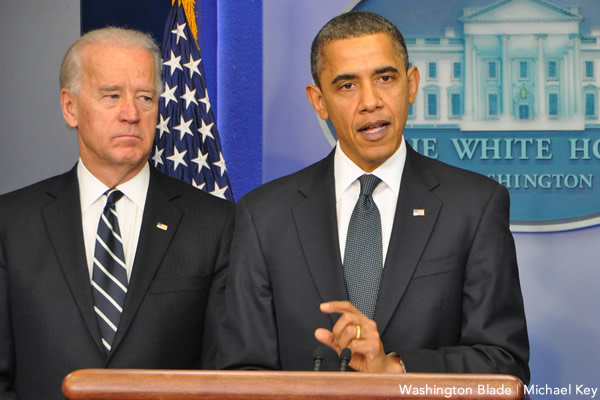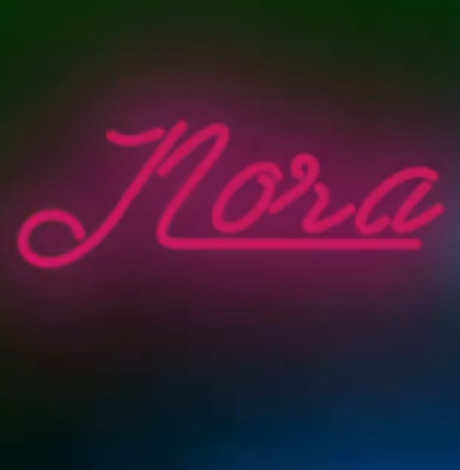a&e features
‘The first lady is a beautiful person inside and out’
Makeup artist Carl Ray assists Michelle Obama with her public face
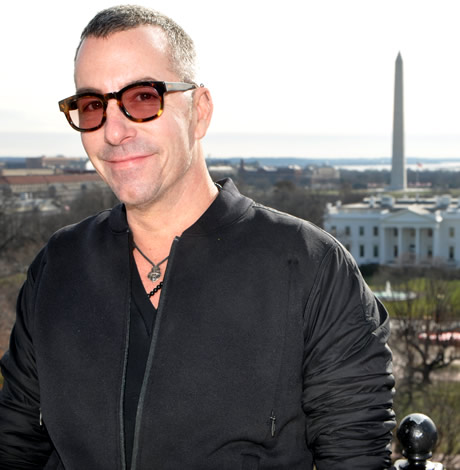
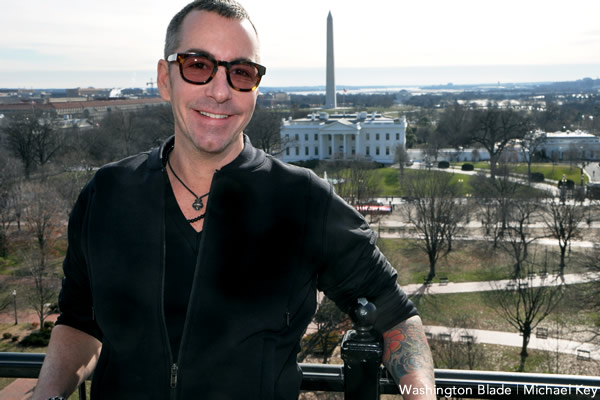
‘Working with her is a great experience, the honor of a lifetime,’ says Carl Ray, who works as first lady Michelle Obama’s makeup artist. (Washington Blade photo by Michael Key)
As a child, he first began applying makeup to the visage of the most important woman in his life. An aptitude for art and affinity for beauty would eventually lead to doing the same for the first lady of the United States.
At age 14, now long prominent and locally pioneering D.C.-based makeup artist Carl Ray casually commented to his mother while she was seated at her vanity mirror, “I don’t think you’re doing that right.” His keen painterly instinct and developing eye for facial enhancement so impressed her that she insisted on his assistance each morning, even waking him up at times to work his magic. Recently divorced from his father, Ray wanted to get her out on dates and happily re-married. He succeeded.
A quick study at honing a fascination for fashion and the styles of the day, Ray was drawn to immersing himself in red-carpet looks and celebrity runway appearances through the pages of magazines.
An only child, born at Andrews Air Force Base in Prince Georges County, Navy brat Ray would spend his early years growing up in Italy, Morocco and Puerto Rico. He returned to the U.S. with his parents to attend junior high school in Virginia Beach.
Accustomed to living near water, the athletic Ray excelled as a high school swimmer, winning state and AAU competitions. Up early every morning to hit the pool, he was known for his breaststroke prowess and also as an avid and accomplished surfer. The popular athlete often hung out with the girls in his classes and dated cheerleaders.
“I did the whole girlfriend thing,” the 49-year-old Ray says, noting he had “never met a gay person and didn’t know what that meant. I just thought I was a weirdo for being attracted to men. But I knew it was something people disapproved of being.”
Also a member of the baseball team, Ray played first base and was a pitcher. “I still am,” he says with a hearty laugh. He came out to his friends shortly before graduation.
He would next earn an associate degree in business while studying commercial art. Ray discovered that painting helped him overcome dyslexia through concentration on activities focusing the right side of his brain. Impressionism was his early love, later developing a more abstract style on the canvas. A painter’s brushes and an artist’s color blending captivated his attention, later fueling a self-taught career.
“I became a fiend for art, painting and photography,” Ray says.
Moving to D.C. in 1991, Ray said the city reminded him of his youth in Europe. His childhood experiences drew him to “a lively city with an abundance of culture,” even if D.C. was more conservative in tone and texture. He soon landed a job at a trendsetting high-end cosmetics and luxury beauty product retailer on Connecticut Avenue near Dupont Circle. He quickly developed relationships with visiting brand representatives, who recognized his interest in makeup and skin care when introducing new products to staff.
“It was a very organic path to a career,” Ray says. “I established a niche for myself as the first resident makeup artist.” He assisted customers in selecting products and training them on how to use and apply them. “I understood that I had a talent and an ability to make women look and feel beautiful.”
Customers began requesting appointments with Ray, hoping he would help them determine what skin care regimens, makeup products and colors, and application techniques would work best for them. He had created his dream job.
“D.C. was playing catch-up in the field and the time was right,” he says. “The opportunity to evolve our services allowed me to pioneer an in-house position that existed in only a few cities then and is more available in D.C. now.”
Ray, who is single, describes himself as a “bridal guru.” He refers to weddings as the closest thing to a “runway event” in local lifestyles. As he developed a client roster, Ray welcomed a bride’s makeup request for a high-profile Georgetown wedding, a service that has since grown to become a specialty.
It was that wedding engagement as an on-site makeup artist that propelled Ray to seek an advance in his then-nascent career in 1999. With only a magazine tear sheet of the nuptial event coverage highlighting his bridal makeup artistry, he walked into the premier salon in D.C. hoping to interest management in bringing him on as their first makeup specialist. He was hired, both for his craft and his chutzpah, and has been the exclusive Artistic Talent at the George Salon at the Four Seasons Hotel ever since.
Recalling his early days at the salon being like “a fish out of water,” Ray would float through the space “bravely” offering to apply lipstick on salon patrons, providing suggestions regarding new shades and discussing additional products that might be of interest. “Clients would see me working or be recommended by others,” he remembers, but “I had to learn how to approach people.” It was a task that proved easily compatible with Ray’s affable manner and winsome personality.
As Ray’s client list expanded, he also garnered gigs for editorial features, magazine covers, film and studio work, fashion events, celebrity and political appearances, TV interviews, foreign dignitary visits, photography shoots and advertising campaigns. His work began appearing in Vogue, the Wall Street Journal, the New Yorker, Glamour, Allure, Elle, Ebony, Town & Country, Bride & Groom, Bride, Lady’s Home Journal and other publications, as well as on television network news and entertainment programs.
Ray’s fashion credits include makeup work seen on the catwalk for Donna Karan, Escada, Gucci, Carolina Herrera, Dolce & Gabbana, Yeollee, and the Vera Wang Fashion Show. His wedding credits include the Reem Acra Bridal Show, Oscar de la Renta Bridal, Monique Lhuillier Bridal, Rivini Bridal and Marchesa Bridal.
Ray has been honored as the top makeup artist for 15 consecutive years by Washingtonian magazine. Freelance work often has him traveling to New York, Los Angeles and other cities.
As accolades and achievements grew as numerous as the brushes in his black canvas Zuca makeup case, Ray received a call nearly six years ago that he remembers well. He was invited to the White House to prepare first lady Michelle Obama for a public appearance, the first of several “audition” opportunities that would lead to joining her personal staff as exclusive makeup artist.
“The first lady is a beautiful person inside and out,” Ray says. “She is a special woman who is very strong, very passionate. Working with her is a great experience, the honor of a lifetime. She is the most ‘real’ individual I have ever met.”
“I love the canvas, she has a beautiful face,” Ray says of “one of the most photographed women in the world, who also has a fashion style recognized around the world.” He notes that his favorite portfolio piece is Obama’s Vogue magazine cover photographed by Annie Liebovitz. His favorite moment was her recent visit with Queen Elizabeth at Buckingham Palace.
Describing Michelle Obama as “very much an easygoing person,” Ray praises her down-to-earth personality. “She is very sweet,” he notes, “and so damn funny and hilarious. I feel privileged to be so close to her, and appreciate her being a big supporter of me professionally and personally. She is a great mentor to me and the rest of the world.”
During the 2012 campaign, Ray admits to sometimes not knowing what city he was in due to an often-whirlwind schedule. Accompanying FLOTUS, he points out, “feels like being on television’s ‘The Amazing Race.’” He hastens to emphasize that “we never discuss politics and I am tight-lipped about talking about her and her family. I respect her and respect her privacy.”
Ray continues to see clients on a regular schedule at the George Salon, balanced with his White House duties and other work. He is proud to provide services to a full complement of Washington women, and a number of men, some famous and most not.
His intrinsic skills, success in trailblazing a new-to-Washington career, and achieving distinction in his field excite Ray about future opportunities to “continue to be a part of the progression of the industry,” he says.
Ray’s response to the frequent letters he receives from young people from across the country asking for advice about becoming a makeup artist is emblematic of his path so far. “Follow your heart and your passion,” he offers in reply, “and you may get to do what you love — like I have.”
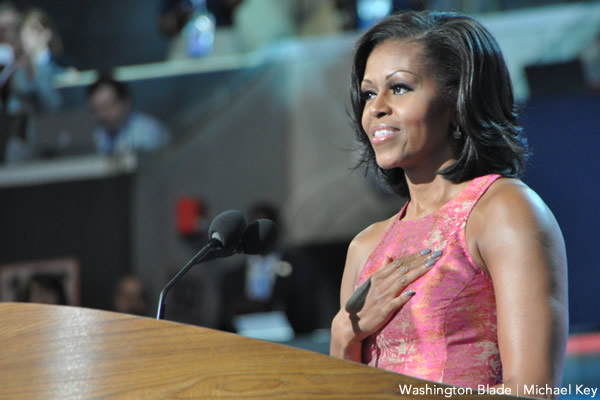
First lady Michelle Obama addressed the Democratic National Convention in 2012. (Washington Blade file photo by Michael Key)
For more information, visit Carl Ray’s website at CarlRayMakeupArtist.com or CarlRayMakeupArtist on Instagram.
Mark Lee is a long-time entrepreneur and community business advocate. Follow him on Twitter: @MarkLeeDC or reach him at [email protected].
a&e features
Visit Cambridge, a ‘beautiful secret’ on Maryland’s Eastern Shore
New organization promotes town’s welcoming vibe, LGBTQ inclusion
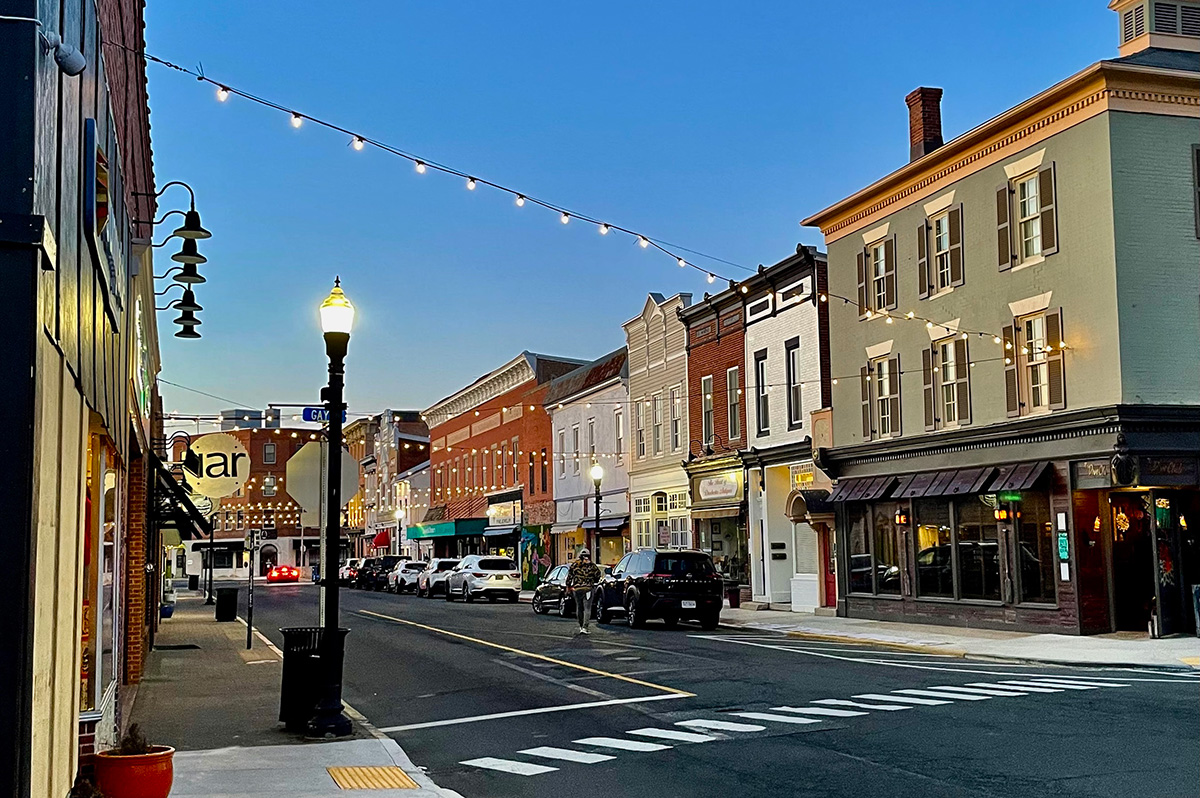
CAMBRIDGE, Md. — Driving through this scenic, historic town on Maryland’s Eastern Shore, you’ll be charmed by streets lined with unique shops, restaurants, and beautifully restored Victorian homes. You’ll also be struck by the number of LGBTQ Pride flags flying throughout the town.
The flags are a reassuring signal that everyone is welcome here, despite the town’s location in ruby red Dorchester County, which voted for Donald Trump over Kamala Harris by a lopsided margin. But don’t let that deter you from visiting. A new organization, Proudly Cambridge, is holding its debut Pride event this weekend, touting the town’s welcoming, inclusive culture.
“We stumbled on a beautiful secret and we wanted to help get the word out,” said James Lumalcuri of the effort to create Proudly Cambridge.
The organization celebrates diversity, enhances public spaces, and seeks to uplift all that Cambridge has to share, according to its mission statement, under the tagline “You Belong Here.”
The group has so far held informal movie nights and a picnic and garden party; the launch party is June 28 at the Cambridge Yacht Club, which will feature a Pride celebration and tea dance. The event’s 75 tickets sold out quickly and proceeds benefit DoCo Pride.
“Tickets went faster than we imagined and we’re bummed we can’t welcome everyone who wanted to come,” Lumalcuri said, adding that organizers plan to make “Cheers on the Choptank” an annual event with added capacity next year.
One of the group’s first projects was to distribute free Pride flags to anyone who requested one and the result is a visually striking display of a large number of flags flying all over town. Up next: Proudly Cambridge plans to roll out a program offering affirming businesses rainbow crab stickers to show their inclusiveness and LGBTQ support. The group also wants to engage with potential visitors and homebuyers.
“We want to spread the word outside of Cambridge — in D.C. and Baltimore — who don’t know about Cambridge,” Lumalcuri said. “We want them to come and know we are a safe haven. You can exist here and feel comfortable and supported by neighbors in a way that we didn’t anticipate when we moved here.”
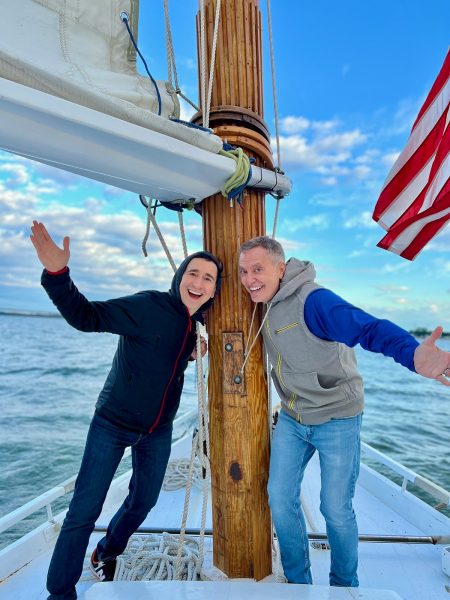
Lumalcuri, 53, a federal government employee, and his husband, Lou Cardenas, 62, a Realtor, purchased a Victorian house in Cambridge in 2021 and embarked on an extensive renovation. The couple also owns a home in Adams Morgan in D.C.
“We saw the opportunity here and wanted to share it with others,” Cardenas said. “There’s lots of housing inventory in the $300-400,000 range … we’re not here to gentrify people out of town because a lot of these homes are just empty and need to be fixed up and we’re happy to be a part of that.”
Lumalcuri was talking with friends one Sunday last year at the gazebo (affectionately known as the “gayzebo” by locals) at the Yacht Club and the idea for Proudly Cambridge was born. The founding board members are Lumalcuri, Corey van Vlymen, Brian Orjuela, Lauren Mross, and Caleb Holland. The group is currently working toward forming a 501(c)3.
“We need visibility and support for those who need it,” Mross said. “We started making lists of what we wanted to do and the five of us ran with it. We started meeting weekly and solidified what we wanted to do.”
Mross, 50, a brand strategist and web designer, moved to Cambridge from Atlanta with her wife three years ago. They knew they wanted to be near the water and farther north and began researching their options when they discovered Cambridge.
“I had not heard of Cambridge but the location seemed perfect,” she said. “I pointed on a map and said this is where we’re going to move.”
The couple packed up, bought a camper trailer and parked it in different campsites but kept coming back to Cambridge.
“I didn’t know how right it was until we moved here,” she said. “It’s the most welcoming place … there’s an energy vortex here – how did so many cool, progressive people end up in one place?”
Corey van Vlymen and his husband live in D.C. and were looking for a second home. They considered Lost River, W.Va., but decided they preferred to be on the water.
“We looked at a map on both sides of the bay and came to Cambridge on a Saturday and bought a house that day,” said van Vlymen, 39, a senior scientist at Booz Allen Hamilton. They’ve owned in Cambridge for two years.
They were drawn to Cambridge due to its location on the water, the affordable housing inventory, and its proximity to D.C.; it’s about an hour and 20 minutes away.
Now, through the work of Proudly Cambridge, they hope to highlight the town’s many attributes to residents and visitors alike.
“Something we all agree on is there’s a perception problem for Cambridge and a lack of awareness,” van Vlymen said. “If you tell someone you’re going to Cambridge, chances are they think, ‘England or Massachusetts?’”
He cited the affordability and the opportunity to save older, historic homes as a big draw for buyers.
“It’s all about celebrating all the things that make Cambridge great,” Mross added. “Our monthly social events are joyful and celebratory.” A recent game night drew about 70 people.
She noted that the goal is not to gentrify the town and push longtime residents out, but to uplift all the people who are already there while welcoming new visitors and future residents.
They also noted that Proudly Cambridge does not seek to supplant existing Pride-focused organizations. Dorchester County Pride organizes countywide Pride events and Delmarva Pride was held in nearby Easton two weeks ago.
“We celebrate all diversity but are gay powered and gay led,” Mross noted.
To learn more about Proudly Cambridge, visit the group on Facebook and Instagram.
What to see and do
Cambridge, located 13 miles up the Choptank River from the Chesapeake Bay, has a population of roughly 15,000. It was settled in 1684 and named for the English university town in 1686. It is home to the Harriet Tubman Museum, mural, and monument. Its proximity to the Blackwater National Wildlife Refuge makes it a popular stop for birders, drawn to more than 27,000 acres of marshland dubbed “the Everglades of the north.”
The refuge is walkable, bikeable, and driveable, making it an accessible attraction for all. There are kayaking and biking tours through Blackwater Adventures (blackwateradventuresmd.com).
Back in town, take a stroll along the water and through historic downtown and admire the architecture. Take in the striking Harriet Tubman mural (424 Race St.). Shop in the many local boutiques, and don’t miss the gay-owned Shorelife Home and Gifts (421 Race St.), filled with stylish coastal décor items.
Stop for breakfast or lunch at Black Water Bakery (429 Race St.), which offers a full compliment of coffee drinks along with a build-your-own mimosa bar and a full menu of creative cocktails.
The Cambridge Yacht Club (1 Mill St.) is always bustling but you need to be a member to get in. Snapper’s on the water is temporarily closed for renovations. RaR Brewing (rarbrewing.com) is popular for craft beers served in an 80-year-old former pool hall and bowling alley. The menu offers burgers, wings, and other bar fare.
For dinner or wine, don’t miss the fantastic Vintage 414 (414 Race St.), which offers lunch, dinner, wine tasting events, specialty foods, and a large selection of wines. The homemade cheddar crackers, inventive flatbreads, and creative desserts (citrus olive oil cake, carrot cake trifle) were a hit on a recent visit.
Also nearby is Ava’s (305 High St.), a regional chain offering outstanding Italian dishes, pizzas, and more.
For something off the beaten path, visit Emily’s Produce (22143 Church Creek Rd.) for its nursery, produce, and prepared meals.
“Ten minutes into the sticks there’s a place called Emily’s Produce, where you can pay $5 and walk through a field and pick sunflowers, blueberries, you can feed the goats … and they have great food,” van Vlymen said.
As for accommodations, there’s the Hyatt Regency Chesapeake Bay (100 Heron Blvd. at Route 50), a resort complex with golf course, spa, and marina. Otherwise, check out Airbnb and VRBO for short-term rentals closer to downtown.
Its proximity to D.C. and Baltimore makes Cambridge an ideal weekend getaway. The large LGBTQ population is welcoming and they are happy to talk up their town and show you around.
“There’s a closeness among the neighbors that I wasn’t feeling in D.C.,” Lumalcuri said. “We look after each other.”
a&e features
James Baldwin bio shows how much of his life is revealed in his work
‘A Love Story’ is first major book on acclaimed author’s life in 30 years
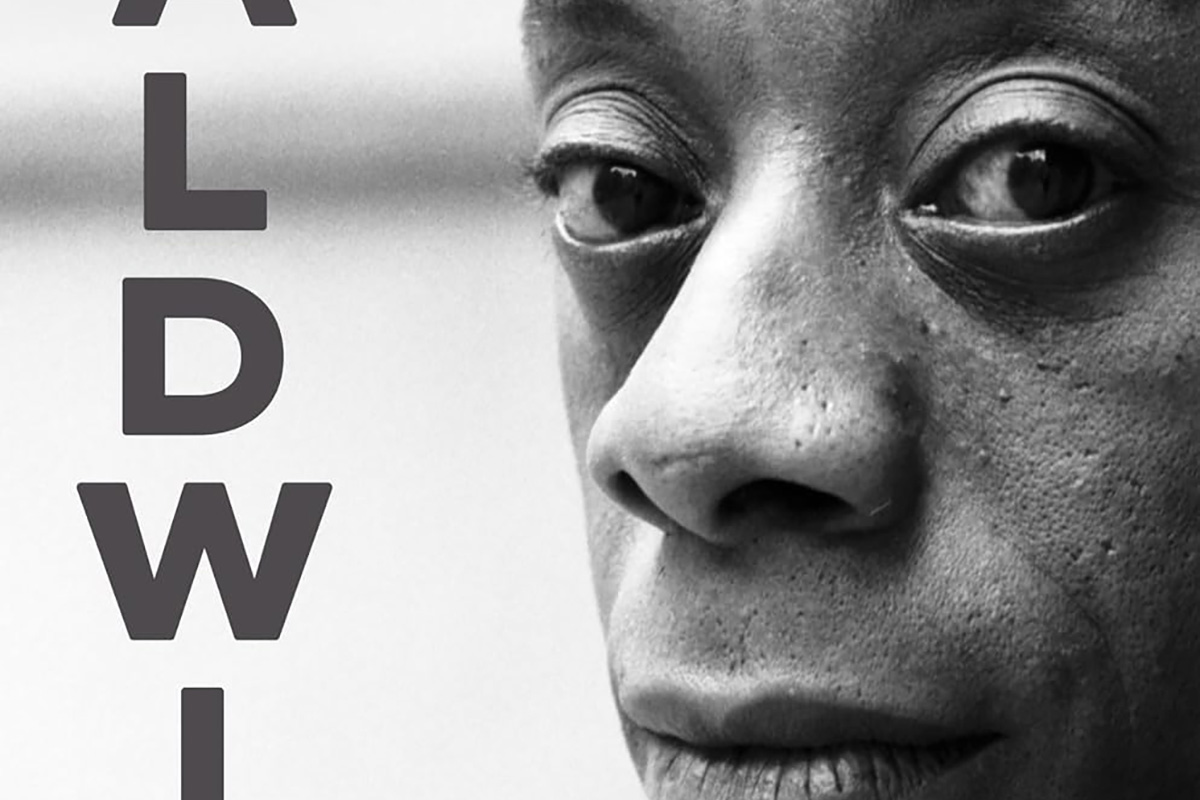
‘Baldwin: A Love Story’
By Nicholas Boggs
c.2025, FSG
$35/704 pages
“Baldwin: A Love Story” is a sympathetic biography, the first major one in 30 years, of acclaimed Black gay writer James Baldwin. Drawing on Baldwin’s fiction, essays, and letters, Nicolas Boggs, a white writer who rediscovered and co-edited a new edition of a long-lost Baldwin book, explores Baldwin’s life and work through focusing on his lovers, mentors, and inspirations.
The book begins with a quick look at Baldwin’s childhood in Harlem, and his difficult relationship with his religious, angry stepfather. Baldwin’s experience with Orilla Miller, a white teacher who encouraged the boy’s writing and took him to plays and movies, even against his father’s wishes, helped shape his life and tempered his feelings toward white people. When Baldwin later joined a church and became a child preacher, though, he felt conflicted between academic success and religious demands, even denouncing Miller at one point. In a fascinating late essay, Baldwin also described his teenage sexual relationship with a mobster, who showed him off in public.
Baldwin’s romantic life was complicated, as he preferred men who were not outwardly gay. Indeed, many would marry women and have children while also involved with Baldwin. Still, they would often remain friends and enabled Baldwin’s work. Lucien Happersberger, who met Baldwin while both were living in Paris, sent him to a Swiss village, where he wrote his first novel, “Go Tell It on the Mountain,” as well as an essay, “Stranger in the Village,” about the oddness of being the first Black person many villagers had ever seen. Baldwin met Turkish actor Engin Cezzar in New York at the Actors’ Studio; Baldwin later spent time in Istanbul with Cezzar and his wife, finishing “Another Country” and directing a controversial play about Turkish prisoners that depicted sexuality and gender.
Baldwin collaborated with French artist Yoran Cazac on a children’s book, which later vanished. Boggs writes of his excitement about coming across this book while a student at Yale and how he later interviewed Cazac and his wife while also republishing the book. Baldwin also had many tumultuous sexual relationships with young men whom he tried to mentor and shape, most of which led to drama and despair.
The book carefully examines Baldwin’s development as a writer. “Go Tell It on the Mountain” draws heavily on his early life, giving subtle signs of the main character John’s sexuality, while “Giovanni’s Room” bravely and openly shows a homosexual relationship, highly controversial at the time. “If Beale Street Could Talk” features a woman as its main character and narrator, the first time Baldwin wrote fully through a woman’s perspective. His essays feel deeply personal, even if they do not reveal everything; Lucian is the unnamed visiting friend in one who the police briefly detained along with Baldwin. He found New York too distracting to write, spending his time there with friends and family or on business. He was close friends with modernist painter Beauford Delaney, also gay, who helped Baldwin see that a Black man could thrive as an artist. Delaney would later move to France, staying near Baldwin’s home.
An epilogue has Boggs writing about encountering Baldwin’s work as one of the few white students in a majority-Black school. It helpfully reminds us that Baldwin connects to all who feel different, no matter their race, sexuality, gender, or class. A well-written, easy-flowing biography, with many excerpts from Baldwin’s writing, it shows how much of his life is revealed in his work. Let’s hope it encourages reading the work, either again or for the first time.
a&e features
Looking back at 50 years of Pride in D.C
Washington Blade’s unique archives chronicle highs, lows of our movement
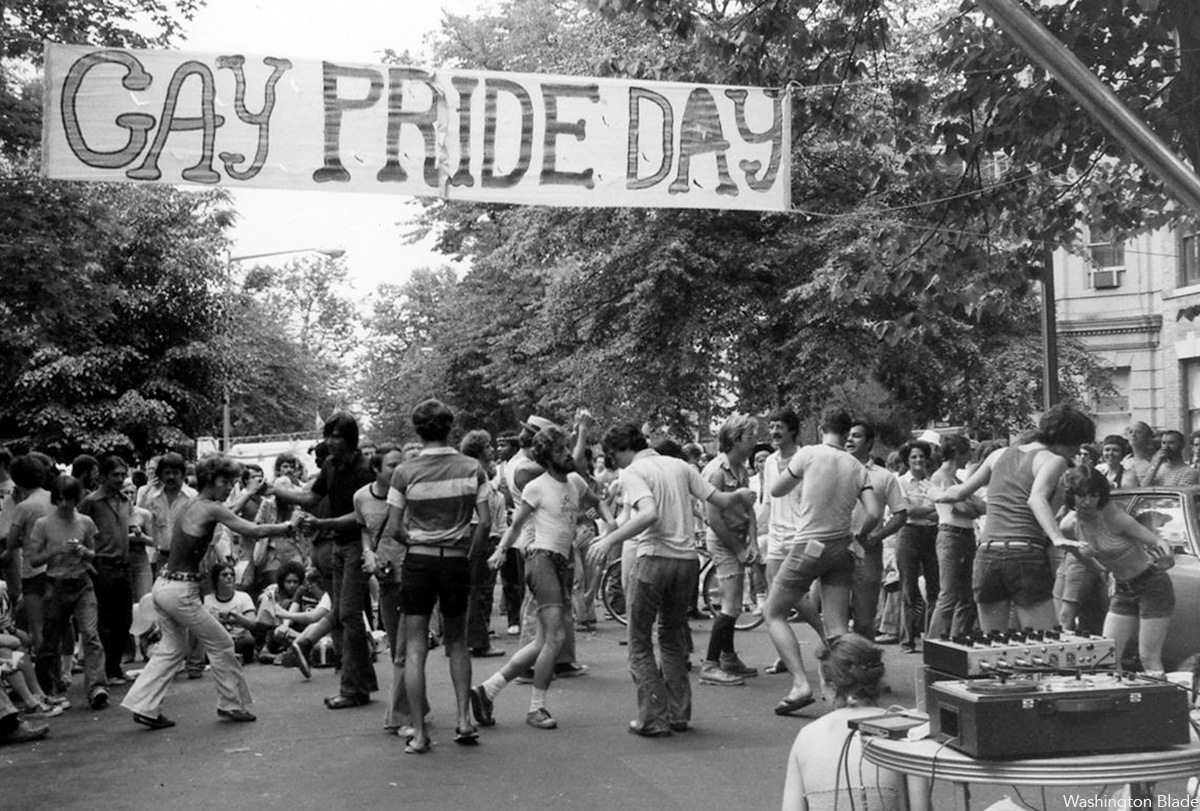
To celebrate the 50th anniversary of LGBTQ Pride in Washington, D.C., the Washington Blade team combed our archives and put together a glossy magazine showcasing five decades of celebrations in the city. Below is a sampling of images from the magazine but be sure to find a print copy starting this week.
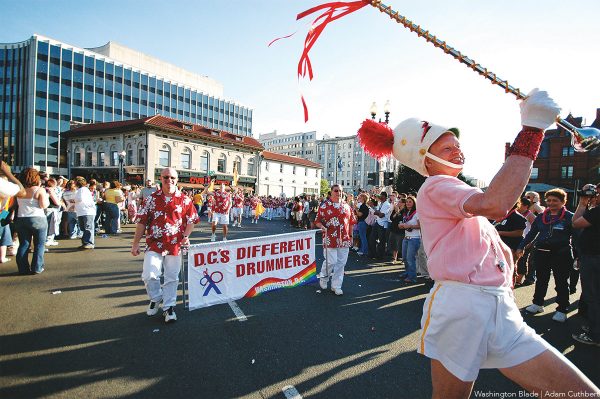
The magazine is being distributed now and is complimentary. You can find copies at LGBTQ bars and restaurants across the city. Or visit the Blade booth at the Pride festival on June 7 and 8 where we will distribute copies.
Thank you to our advertisers and sponsors, whose support has enabled us to distribute the magazine free of charge. And thanks to our dedicated team at the Blade, especially Photo Editor Michael Key, who spent many hours searching the archives for the best images, many of which are unique to the Blade and cannot be found elsewhere. And thanks to our dynamic production team of Meaghan Juba, who designed the magazine, and Phil Rockstroh who managed the process. Stephen Rutgers and Brian Pitts handled sales and marketing and staff writers Lou Chibbaro Jr., Christopher Kane, Michael K. Lavers, Joe Reberkenny along with freelancer and former Blade staffer Joey DiGuglielmo wrote the essays.
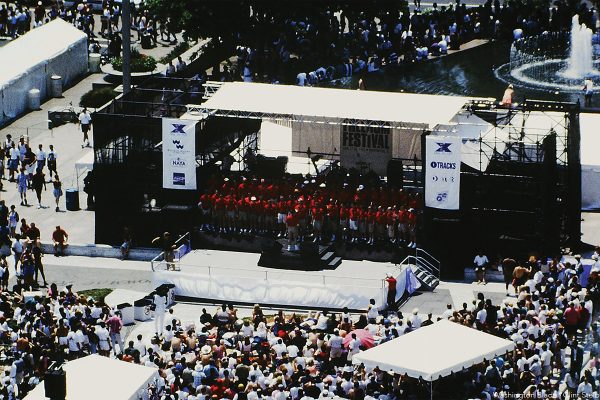
The magazine represents more than 50 years of hard work by countless reporters, editors, advertising sales reps, photographers, and other media professionals who have brought you the Washington Blade since 1969.
We hope you enjoy the magazine and keep it as a reminder of all the many ups and downs our local LGBTQ community has experienced over the past 50 years.
I hope you will consider supporting our vital mission by becoming a Blade member today. At a time when reliable, accurate LGBTQ news is more essential than ever, your contribution helps make it possible. With a monthly gift starting at just $7, you’ll ensure that the Blade remains a trusted, free resource for the community — now and for years to come. Click here to help fund LGBTQ journalism.
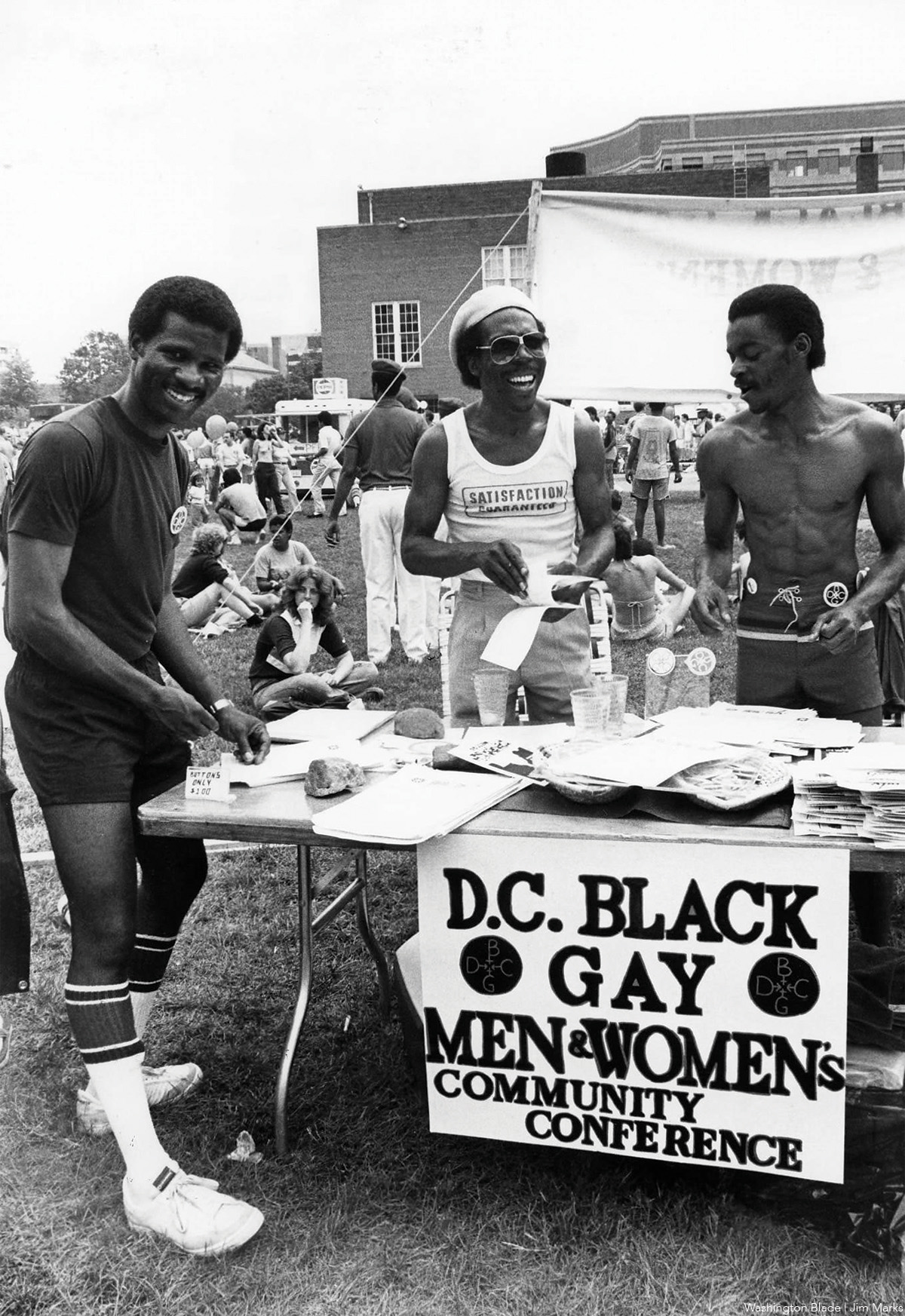
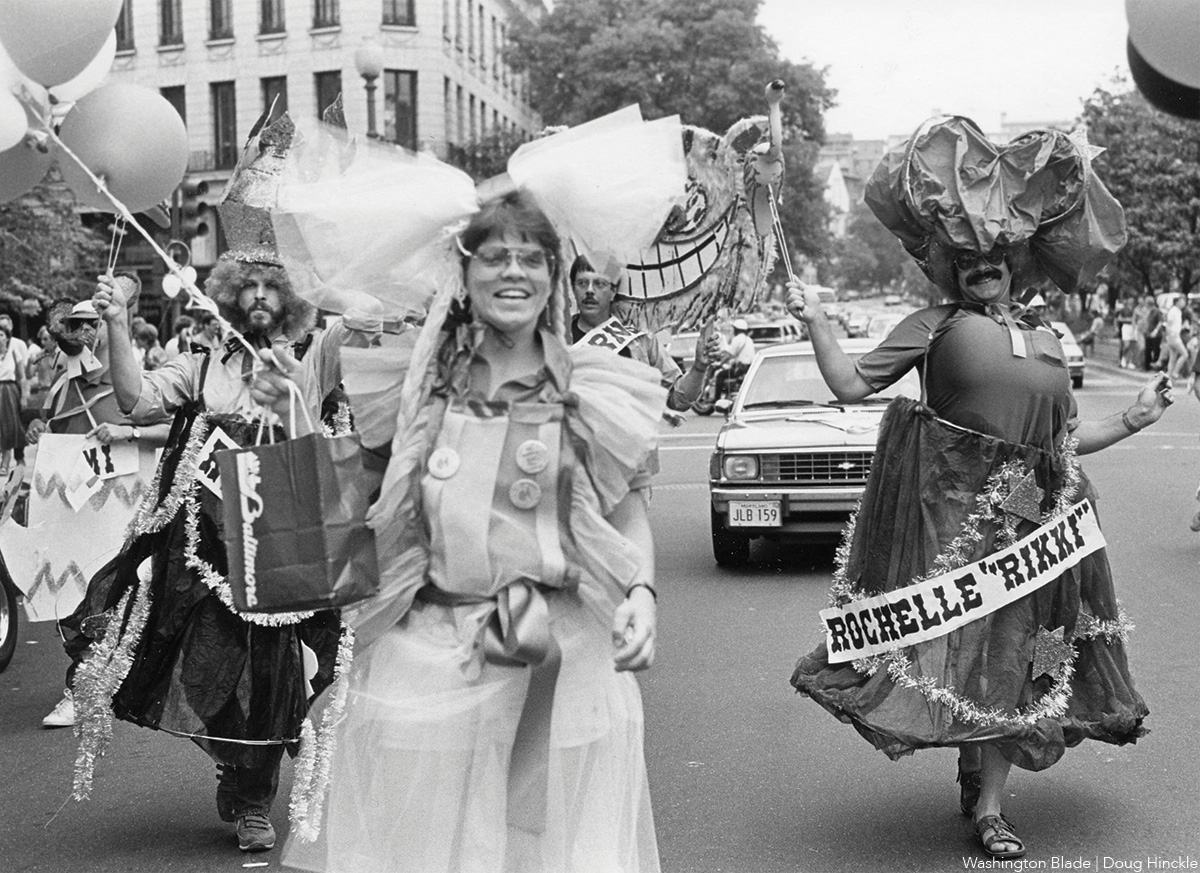
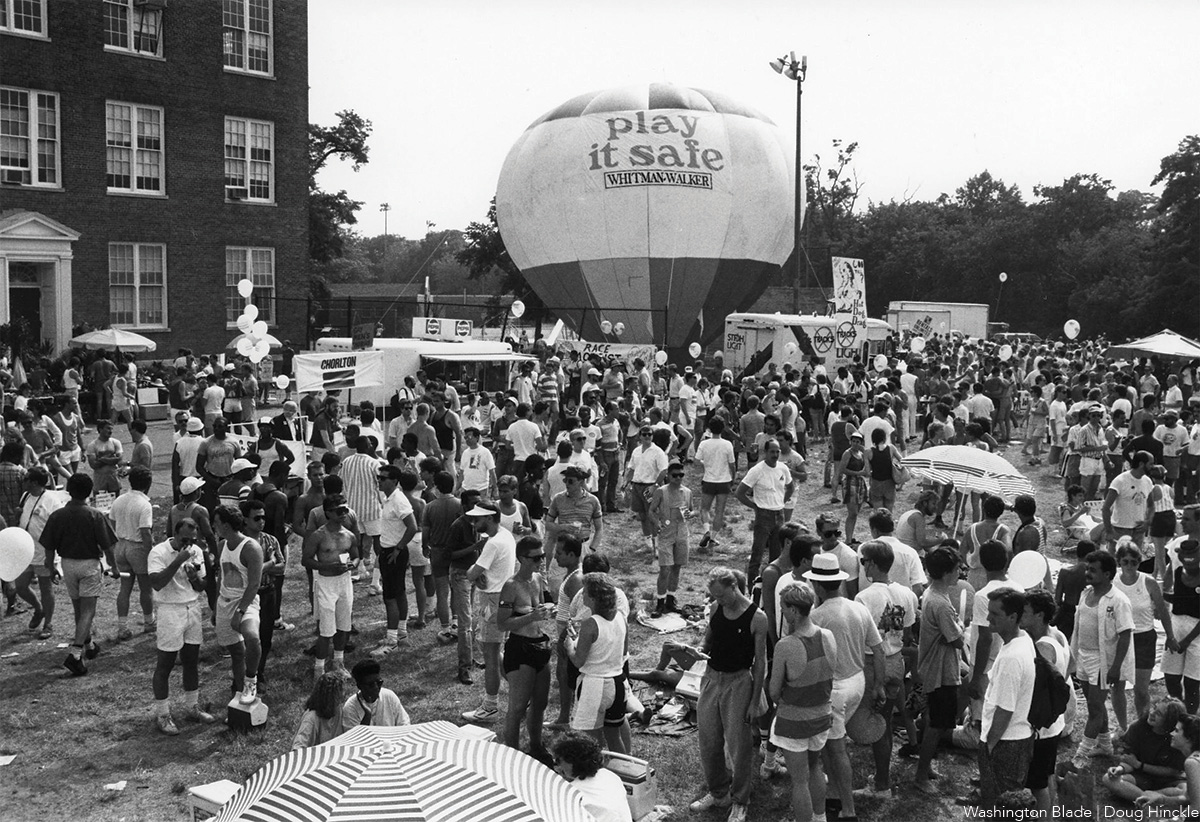
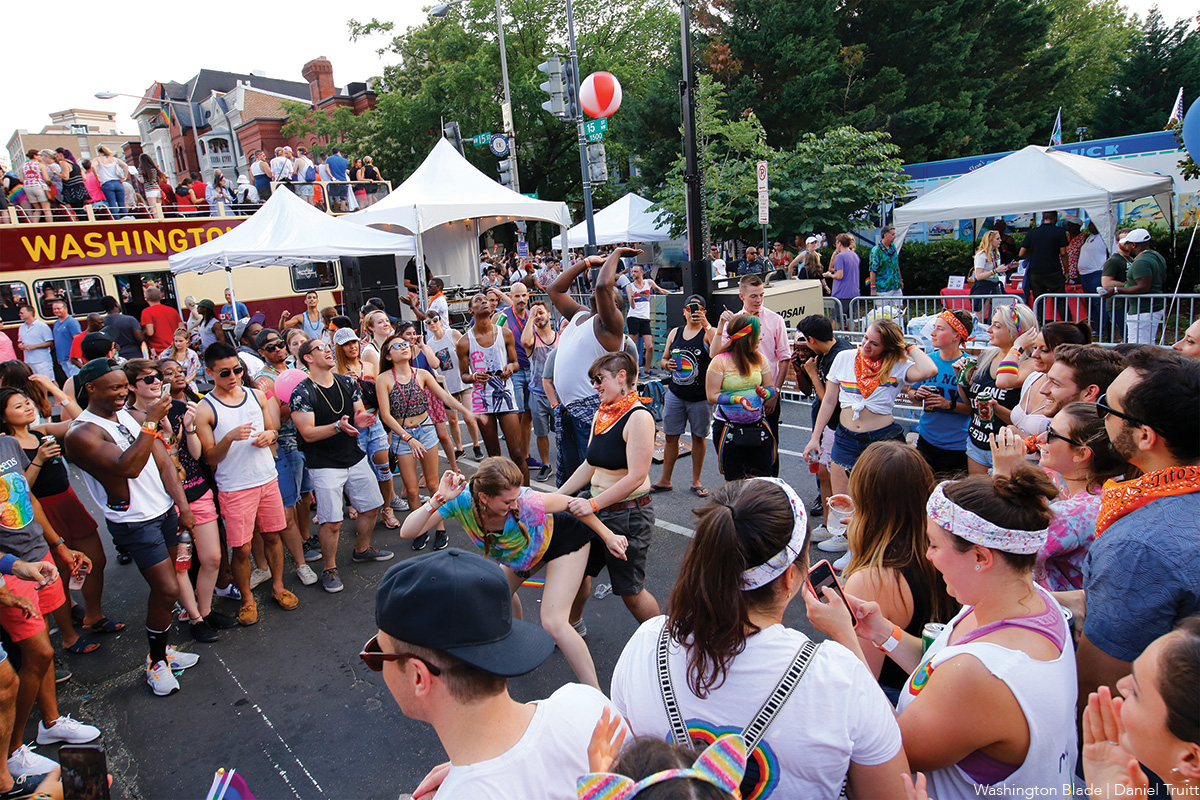
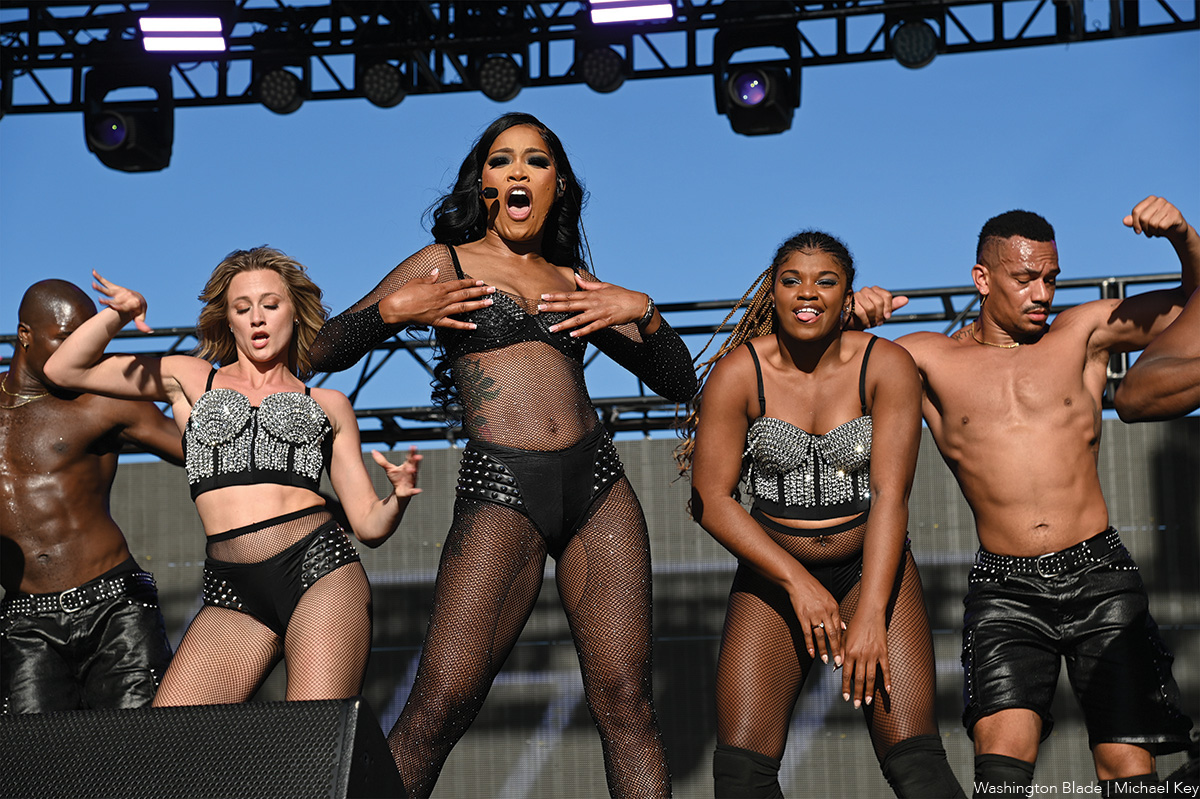
-
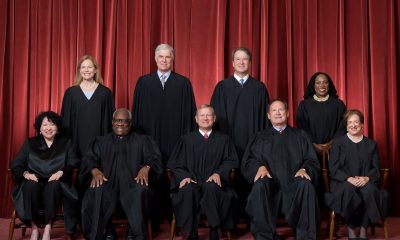
 U.S. Supreme Court4 days ago
U.S. Supreme Court4 days agoSupreme Court upholds ACA rule that makes PrEP, other preventative care free
-

 U.S. Supreme Court4 days ago
U.S. Supreme Court4 days agoSupreme Court rules parents must have option to opt children out of LGBTQ-specific lessons
-
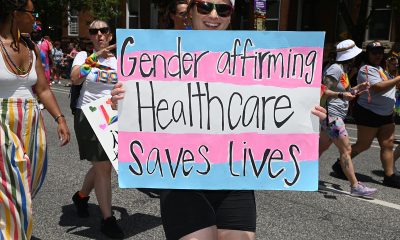
 Congress5 days ago
Congress5 days agoSenate parliamentarian orders removal of gender-affirming care ban from GOP reconciliation bill
-
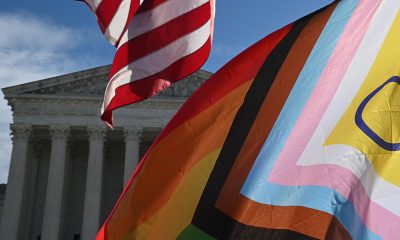
 Opinions5 days ago
Opinions5 days agoMy heart goes out to trans community and their families



